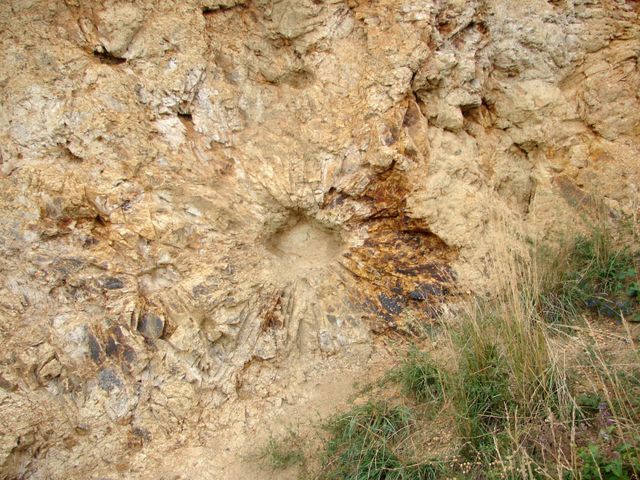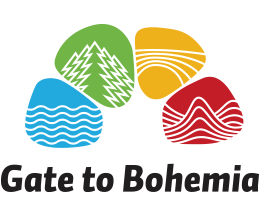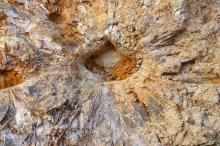Bike trail No. 25:
Sutom – 1,5 km Vlastislav – 2 km Mrsklesy – 1,5 km Lhota – 3 km Skalice – 1 km Dřevce – 2,5 km Červený újezd – 4 km Měrunice CONTINUE ON 232: – 3,5 towards the intersection with road Most -Lovosice and follow this busy road for 1 km through - Libčeves , leave the bike trail and continue on 3rd class roads: - 2,5 km Židovice – 1 km Hnojnice – l km Kamenná slunce (Stone Suns) / 3 km Děčany– 2,5 km Lukohořany – 3 km Lkáň - 3 km Dlažkovice/ public swimming pool - lake / –1,5 Podsedice/public swimming pool/ - cross a busy road!!- 3 km on a 3rd class road to Vlastislav - 1 km Skalka chateau - 2 km intersection Mokrý vrch (Wet hill) – 1,5 Sutom - all the way to guesthouse
Difficulty: 1. a section in the villag of Dřevce is difficult, but then only downhill rides and flat plains and bike trail No. 25 and 3rd class road No. 232 br /> Total length 46 km.
Kamenná slunce u Hnojnic (Stone suns) (NPP), near the road you will see a green but poorly visible sign with CHKO information, are considered unique as far as the extent of their existence because you will not find anywhere like this in the entire Czech Republic. Unique formations and objects are concentrated in one small location - the former quarry, away from the main tourist routes. If we want to find out how exactly they were created, we would have to go far back in the history, all the way back to the Tertiary period
At that time, here in the area of Czech Central Mountains you would walk on a very hot ground. Strong volcanic activities were transforming and changing the prehistoric countryside so easily as children build their sand hills on a playground. The cretaceous sea had covered the area with thick sediment layer, while hot magma was trying to find its way to the surface and taking with it solid Mesozoic limestones, marls, sandstones and other rocks. Red-hot boulders were forming the cores of our future stone suns. The slowly cooling dykes crusts around them were cracking, creating a rose-like shapes.
It took millions of years before a man came to this place and began to excavate clay and search for limestones. For this panoramic photo I had to use a fisheye lens, in order to make sure that I can take this entire locale in one shot. Today everything would be different. Kilos and kilos of explosives, huge mining machinery... No one would even notice these unique stones suns, which would end up in mining rubbles. But workers who came to these location did not know anything about machinery and all work was done manually.
Thanks to that, these beautiful stone suns hidden for thousands and thousands of years in the ground were discovered and are now admired. Now, we photographers have a chance to capture their beauty before erosion and the vandals can destroy them.




































